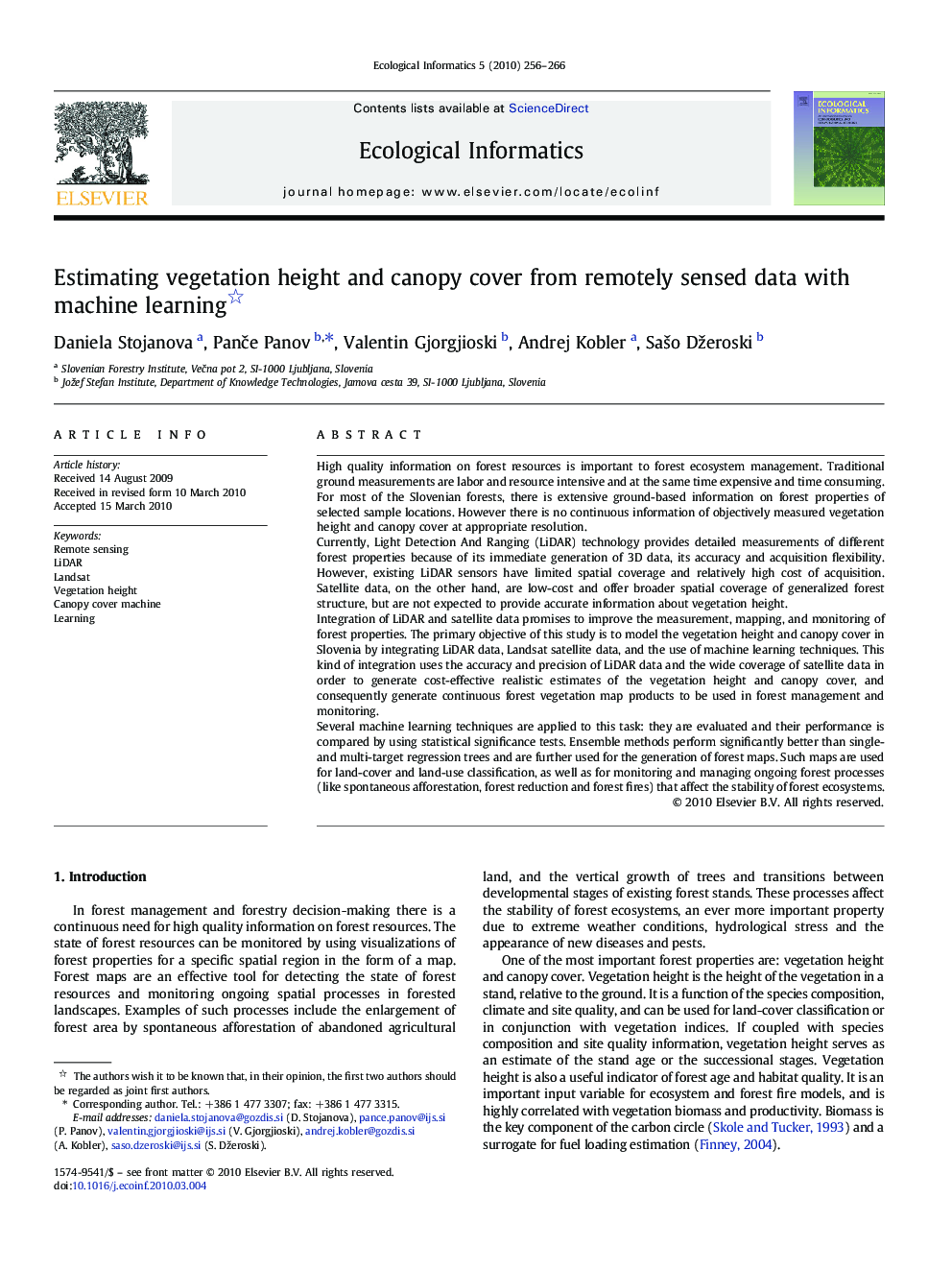| Article ID | Journal | Published Year | Pages | File Type |
|---|---|---|---|---|
| 4375146 | Ecological Informatics | 2010 | 11 Pages |
High quality information on forest resources is important to forest ecosystem management. Traditional ground measurements are labor and resource intensive and at the same time expensive and time consuming. For most of the Slovenian forests, there is extensive ground-based information on forest properties of selected sample locations. However there is no continuous information of objectively measured vegetation height and canopy cover at appropriate resolution.Currently, Light Detection And Ranging (LiDAR) technology provides detailed measurements of different forest properties because of its immediate generation of 3D data, its accuracy and acquisition flexibility. However, existing LiDAR sensors have limited spatial coverage and relatively high cost of acquisition. Satellite data, on the other hand, are low-cost and offer broader spatial coverage of generalized forest structure, but are not expected to provide accurate information about vegetation height.Integration of LiDAR and satellite data promises to improve the measurement, mapping, and monitoring of forest properties. The primary objective of this study is to model the vegetation height and canopy cover in Slovenia by integrating LiDAR data, Landsat satellite data, and the use of machine learning techniques. This kind of integration uses the accuracy and precision of LiDAR data and the wide coverage of satellite data in order to generate cost-effective realistic estimates of the vegetation height and canopy cover, and consequently generate continuous forest vegetation map products to be used in forest management and monitoring.Several machine learning techniques are applied to this task: they are evaluated and their performance is compared by using statistical significance tests. Ensemble methods perform significantly better than single- and multi-target regression trees and are further used for the generation of forest maps. Such maps are used for land-cover and land-use classification, as well as for monitoring and managing ongoing forest processes (like spontaneous afforestation, forest reduction and forest fires) that affect the stability of forest ecosystems.
